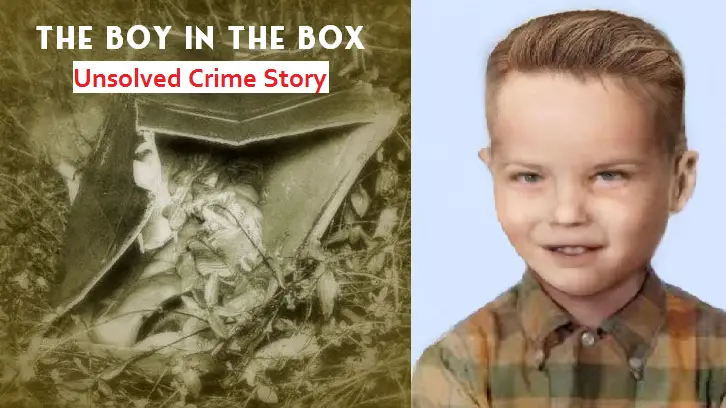Table of Contents
The Boy in the Box: In February 1957, a young boy’s lifeless body was discovered in a cardboard box in the Fox Chase neighborhood of Philadelphia. The boy, who was estimated to be around 4 to 6 years old, had been brutally beaten and possibly starved before his death. His identity and the identity of his killer have remained a mystery for over six decades, making the case one of the most perplexing and haunting unsolved crimes in Philadelphia history.
The Unsolved Case
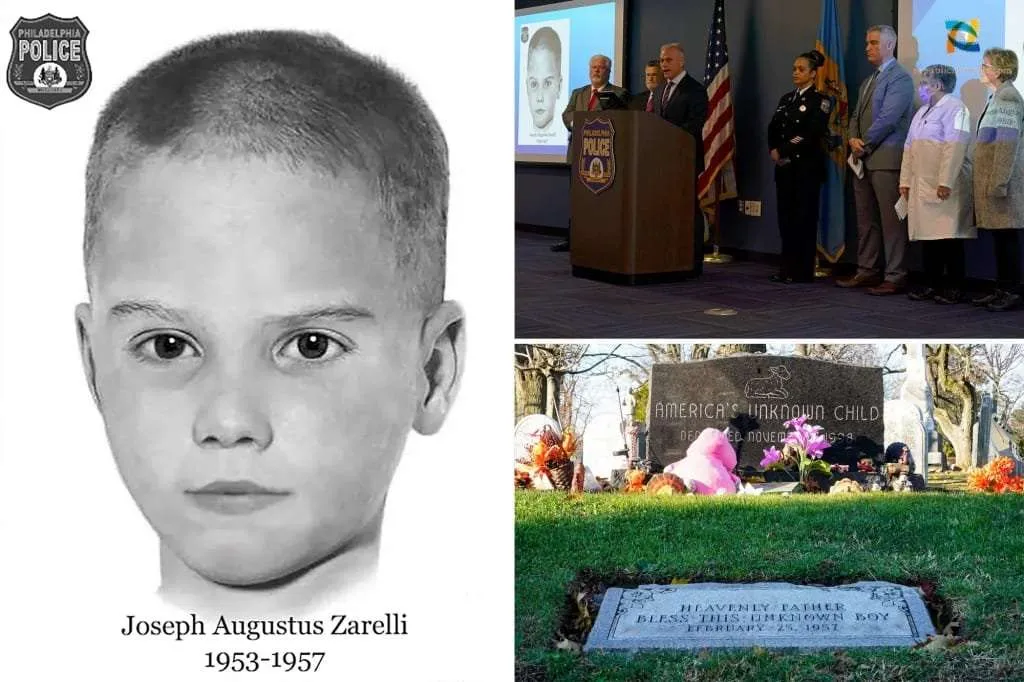
Despite extensive efforts by law enforcement and concerned citizens, the Boy in the Box case remains unsolved to this day. The lack of identification of the boy, combined with the lack of evidence pointing to a specific suspect, has made it challenging for investigators to make progress in the case. Over the years, various theories and suspects have emerged, but none have been able to provide a definitive answer to the questions that continue to haunt those familiar with the case: Who was the boy, and who killed him?
The Discovery of the Body
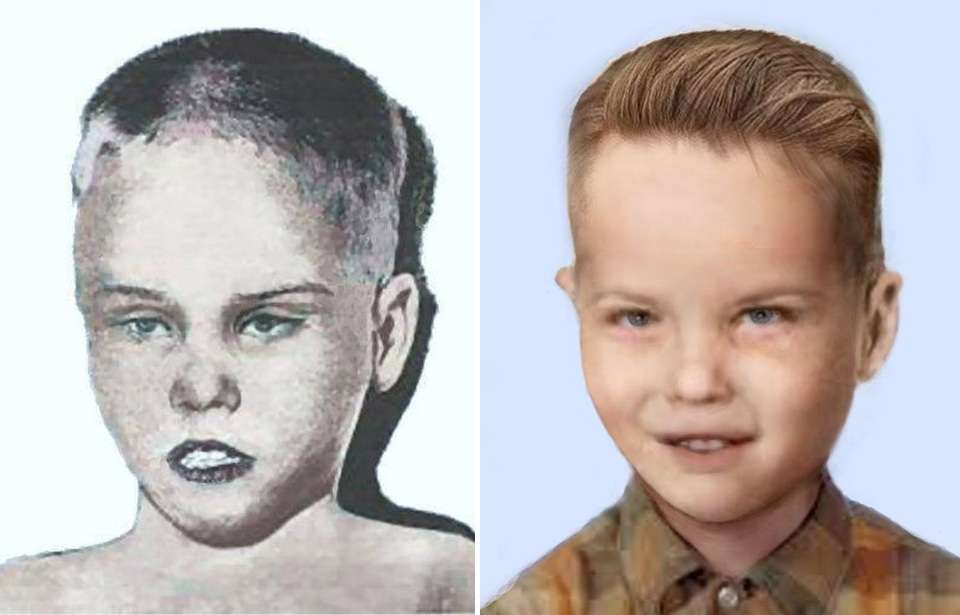
On February 25th, 1957, a college student named Johnathan “Johnny” Hoff was walking along Susquehanna Road in the Fox Chase section of Philadelphia when he discovered a cardboard box left near the edge of a rocky roadside. The box had been discarded near a set of abandoned Jumbo wooden crates, with a blanket placed over it to conceal its contents. Curiosity getting the better of him, Hoff decided to open the box, where he found the naked, beaten body of a young boy.
Hoff ran to a nearby store to call the police. When authorities arrived, they found the body of a Caucasian boy who appeared to be around 4 to 6 years old. The child’s hair had been crudely cut, and his entire body had been washed clean, possibly to remove any evidence of his identity. The boy’s face was badly bruised and his nose was broken. Investigators also found signs of sexual abuse, indicating that the boy had suffered extreme trauma before his death.
The investigation into the boy’s death began immediately, but identifying him proved to be a difficult task. The child had no identification on him, and none of the locals had reported a missing child that matched his description. The police began an extensive search for any clues that might lead them to the boy’s identity or his killer.
Investigation
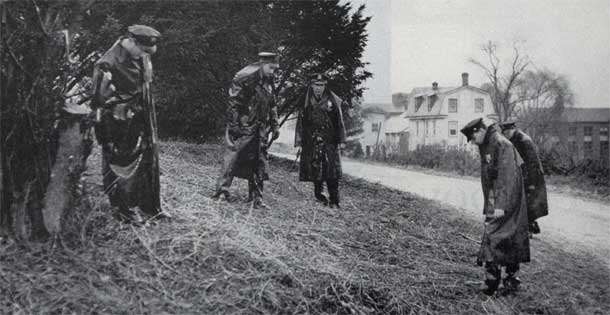
The discovery of the boy’s body in the box sparked an extensive investigation by the Philadelphia Police Department. Despite numerous leads and tips, the case remains one of the most puzzling unsolved mysteries in American history.
One of the first steps in the investigation was to identify the boy. Posters were placed throughout the city, and composite sketches were circulated in newspapers and on television. Despite these efforts, no one came forward with any information about the boy’s identity.
The investigation also included forensic analysis of the body and the box in which it was found. The box was traced to a J.C. Penney store in Upper Darby, Pennsylvania, where it was discovered that the box had been sold in 1953. However, the store had no record of who had purchased the box.
Forensic experts examined the boy’s body, searching for any clues that might help identify him or his killer. The boy was estimated to be between 4 and 6 years old and had been dead for several days before his body was discovered. He had been severely beaten and suffered from numerous injuries, including a fractured skull.
Despite the extensive forensic analysis, no conclusive evidence was found that could help identify the boy or his killer. The lack of physical evidence, combined with the lack of any witnesses coming forward, has made it difficult for investigators to make progress in the case.
Over the years, many theories have been proposed to explain the boy’s death. Some have suggested that he may have been the victim of child abuse or trafficking. Others have speculated that he may have been the victim of a black market adoption scheme. Still, others believe that he may have been the victim of a serial killer.
Despite the numerous theories and the many efforts to solve the case, the identity of the boy in the box remains a mystery. The case continues to haunt those who investigate it and those who have come to know its tragic story.
Theories and Speculation
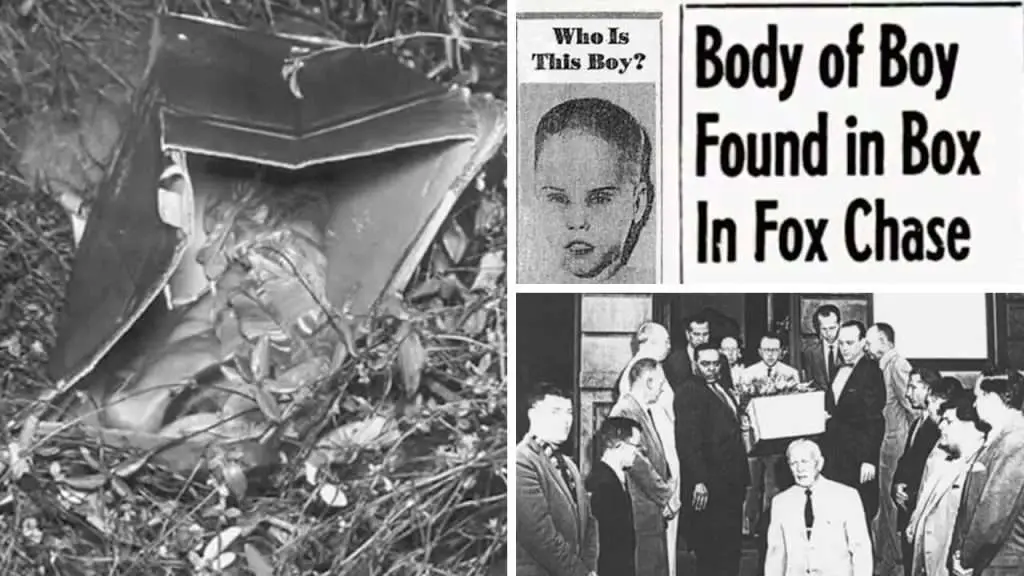
The Boy in the Box case has been the subject of much speculation and many theories over the years. Some of the theories proposed include:
- The boy was the victim of a black market adoption ring or was being raised in an abusive home, and was killed when he became too much of a burden or was in danger of being discovered.
- The boy was a victim of child trafficking, and was abducted and killed by someone who was involved in this criminal activity.
- The boy was the victim of a serial killer, and his death was one of many similar crimes committed by the same individual.
Despite the many theories proposed, no one has ever been able to definitively solve the case. However, some of the most plausible and controversial theories include:
- The boy was the victim of a botched abortion or an illegal adoption, and was killed to cover up the crime.
- The boy was a victim of child abuse, and was killed by someone close to him, possibly a parent or relative.
- The boy was a victim of a sex crime, and was killed by someone who was sexually attracted to children.
Over the years, investigators have identified a number of potential suspects, but none of them have been definitively linked to the crime. Some of the most notable suspects include:
- A woman known as “Martha” or “Mary” who was seen with the boy in the days leading up to his death. She has never been identified, and her role in the crime remains a mystery.
- A man named George Shaw, who was rumored to be involved in the boy’s death. However, Shaw was never charged with any crime, and his connection to the case remains unclear.
- A man named Carl K. Sappenfield, who was a known pedophile and was living in the area at the time of the murder. However, he was never charged with the crime and died in 1962.
Despite the many potential suspects and theories, the case of The Boy in the Box remains unsolved. The investigation into the boy’s death has been ongoing for over 60 years, and it is unlikely that the truth will ever be known. Nevertheless, the case continues to captivate the public’s attention, and has become one of the most enduring mysteries in American history.
Media Coverage and Public Reaction
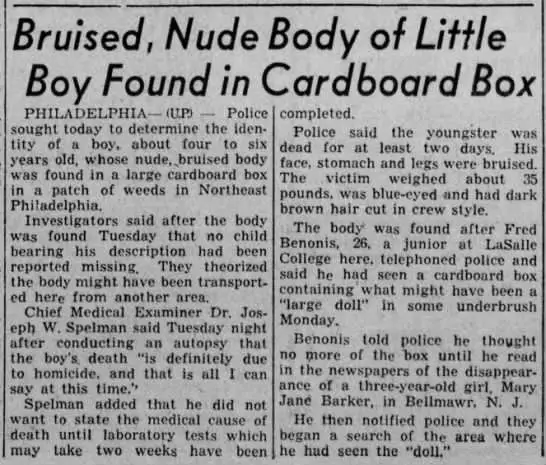
The Boy in the Box case quickly gained national attention and became a topic of interest for the media. Reporters from newspapers, radio stations, and television networks covered the story extensively. The case was also widely discussed in the community, and people were eager to find out who the boy was and what happened to him.
The media coverage of the case had a significant impact on the public, as it heightened awareness of the case and generated a sense of fear and outrage. People were shocked and disturbed by the circumstances surrounding the boy’s death, and they demanded justice for him.
As the investigation continued, the community’s reaction to the case evolved. People became frustrated and disillusioned with the lack of progress in the investigation, and they began to lose hope that the boy would ever be identified or that his killer would be brought to justice.
Over time, the case has continued to capture the public’s imagination and has become a topic of fascination for true crime enthusiasts. The Boy in the Box has been the subject of numerous books, documentaries, and television shows, and his story has been retold in popular culture.
Some have speculated that the media attention surrounding the case and the public’s fascination with it may have hindered the investigation, as it created an environment in which people were more interested in discussing the case than in providing useful information to the police.
Despite the passage of time, the Boy in the Box case remains one of the most baffling and mysterious unsolved crimes in American history. The case has captured the public’s imagination and has become a symbol of the human toll of violence and the search for justice.
Recent Developments
The Boy in the Box case has remained unsolved for over six decades, but there have been some recent developments in the case that have brought renewed attention to it.
Overview of Recent Developments:
In 2016, a woman named Louise Toms, who lived in the area at the time of the boy’s discovery, came forward with new information. She claimed that her abusive mother had purchased the boy from his birth mother and raised him as a slave. Toms’ story was never substantiated, but it brought new attention to the case and sparked renewed interest in finding the boy’s identity and killer.
In 2020, a forensic genealogy company named Parabon NanoLabs announced that they had used DNA evidence from the boy’s remains to create a composite image of what the boy may have looked like. The image was released to the public in the hopes of generating new leads in the case.
New Evidence and Leads:
Over the years, investigators have received thousands of tips and leads in the case, but none have led to a breakthrough. However, advancements in forensic technology have led to new evidence and leads in recent years.
In 2002, the boy’s body was exhumed for DNA analysis, but the results were inconclusive. In 2016, the National Center for Missing and Exploited Children conducted a new round of DNA testing on the boy’s remains, but the results were again inconclusive.
Despite these setbacks, investigators continue to explore new leads in the case, and the release of the composite image in 2020 has generated renewed interest in the case.
Why the Case Remains Unsolved:
The Boy in the Box case remains one of the most puzzling unsolved crimes in American history. Despite extensive efforts by law enforcement and the public, the identity of the boy and his killer remain unknown.
One of the reasons why the case has remained unsolved for so long is the lack of physical evidence. The boy’s body was found without any identifying clothing or personal items, and there were no witnesses to the crime.
Additionally, the case was mishandled in its early stages, with evidence being mishandled or lost. The investigation was also hampered by a lack of technology and resources.
The Boy in the Box – America’s Unknown Child (Video)
Conclusion
The Boy in the Box case remains one of the most haunting and unsolved crimes in American history. The discovery of the young boy’s body in a cardboard box in Philadelphia in 1957 shocked the nation and the world. Despite extensive efforts to identify him and find his killer, the case remains a mystery to this day.
As we reflect on this tragic case, it is important to remember the impact it has had on our society. The Boy in the Box case served as a catalyst for improvements in child welfare and advocacy. It also sparked an increased interest in forensic science and the use of technology in solving crimes.
However, the most important takeaway from this case is the need for justice. We must continue to seek answers and closure for the victim and their family. It is a call to action for anyone with information about the case to come forward and help bring justice to this innocent child.
In conclusion, The Boy in the Box case is a reminder of the human toll of unsolved crimes and the importance of seeking justice for victims and their families. As a society, we must never forget the young boy who was found in that cardboard box and we must continue to work towards finding his killer and bringing him to justice.
Related: The Oakland County Child Killer: Unsolved Murders That Shook Michigan

